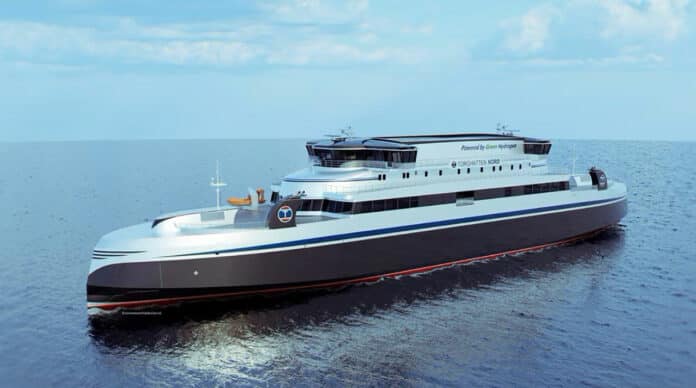A transport firm, Torghatten Nord, has chosen the Norwegian Myklebust Shipyard for the construction of the ‘world’s largest’ hydrogen-powered ships.
These ships will be designed to operate in the waters of the Vestfjordstrekninga fjord in the Arctic Circle and transport up to 120 vehicles on Norway’s longest ferry route.
The vessels will connect the towns of Bodø and Lofoten and will be bunkered with locally produced hydrogen. The Norwegian Ship Design Company will design the ships, and they are expected to be delivered by 2026.
The project involves passenger transportation with hydrogen over a challenging and lengthy route. This has never been done before, and it’s essential to consider all safety aspects in designing and implementing technical solutions for ferries that travel long distances in weather-exposed waterways.
According to Marius Hansen, the managing director of Torghatten Nord, this project will significantly boost Norwegian technology and the shipyard environment.
The construction of these large-capacity ferries will take place at the Myklebust facility in Gursken, located south of Ålesund. This project will require increased staffing and high activity at the shipyard for the foreseeable future.
The world’s largest hydrogen-powered ships will connect Bodø, the islands of Røst and Værøy, and Moskenes along the 172-mile-long (278 kilometers) Vestfjordstrekninga ferry route. These ships, which are 117 meters long and can carry 120 cars, will use green hydrogen as their main fuel source. They will also cover at least 85 percent of their distance while navigating the harsh Arctic waters.
These ships will be facing some tough challenges due to their average speed of 17 knots. However, the team has ensured that the ships are designed to handle such conditions effectively.
The ships will be equipped with hydrogen storage units, which will provide fuel to fuel cells. These fuel cells will convert energy into electricity to power the ships’ auxiliary systems and propulsion, thereby reducing CO2 emissions by approximately 26,500 tons annually during the journey, as per Offshore Energy.
The project is a collaborative effort between LR as the class society, owner Torghatten Nord, The Norwegian Ship Design Company, Myklebust Verft shipyard, systems integrator SEAM, and hydrogen supplier GreenH.
